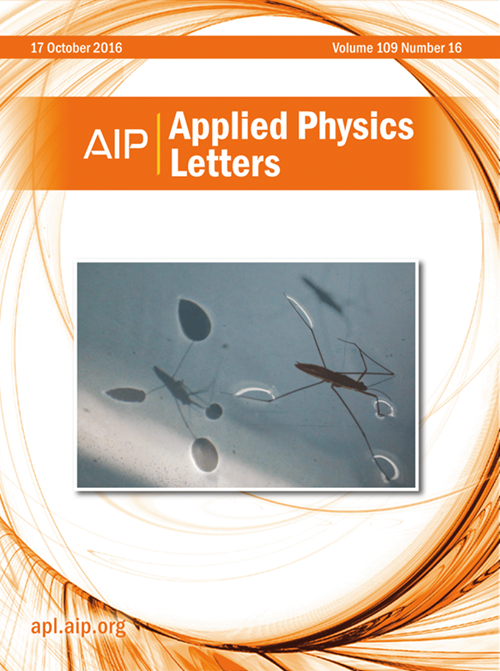用于集成到离子微芯片中的快速响应低功耗原子烤箱
IF 3.6
2区 物理与天体物理
Q2 PHYSICS, APPLIED
引用次数: 0
摘要
我们提出了一种用于量子技术的微制造中性原子源,可以使用成熟的微机电系统制造技术轻松集成到微芯片设备上,并将其与传统的片外离子加载机制进行了对比。该装置的加热灯丝小至90×90µm2。发现171Yb荧光响应的测试在几十毫秒以内,与以前的文献相比,在毫瓦的功率下快了两个数量级,使其成为低功率器件封装的理想选择。我们演示了蒸发材料如何在真空中被封顶,以与在空气中容易氧化的材料(如Ba)一起工作,这可以避免在加载过程中需要烧蚀激光器。我们计算出量子技术中常用离子的连续使用寿命超过10年。本文章由计算机程序翻译,如有差异,请以英文原文为准。
Fast-response low-power atomic oven for integration into an ion microchip
We present a microfabricated neutral atom source for quantum technologies that can be easily integrated onto microchip devices using well-established micro-electromechanical systems fabrication techniques, and contrast this to conventional off-chip ion loading mechanisms. The heating filament of the device is shown to be as small as 90×90 µm2. Testing of the 171Yb fluorescence response is found to be in the low tens of milliseconds, two orders of magnitude faster compared to previous literature at a power of milliwatts, making it desirable for low-power device packages. We demonstrate how the evaporation material can be capped in vacuum to work with materials such as Ba that oxidizes easily in air, which can avoid the need for ablation lasers in the loading process. We calculate oven lifetimes to be over 10 years of continuous use for commonly used ion species in quantum technology.
求助全文
通过发布文献求助,成功后即可免费获取论文全文。
去求助
来源期刊

Applied Physics Letters
物理-物理:应用
CiteScore
6.40
自引率
10.00%
发文量
1821
审稿时长
1.6 months
期刊介绍:
Applied Physics Letters (APL) features concise, up-to-date reports on significant new findings in applied physics. Emphasizing rapid dissemination of key data and new physical insights, APL offers prompt publication of new experimental and theoretical papers reporting applications of physics phenomena to all branches of science, engineering, and modern technology.
In addition to regular articles, the journal also publishes invited Fast Track, Perspectives, and in-depth Editorials which report on cutting-edge areas in applied physics.
APL Perspectives are forward-looking invited letters which highlight recent developments or discoveries. Emphasis is placed on very recent developments, potentially disruptive technologies, open questions and possible solutions. They also include a mini-roadmap detailing where the community should direct efforts in order for the phenomena to be viable for application and the challenges associated with meeting that performance threshold. Perspectives are characterized by personal viewpoints and opinions of recognized experts in the field.
Fast Track articles are invited original research articles that report results that are particularly novel and important or provide a significant advancement in an emerging field. Because of the urgency and scientific importance of the work, the peer review process is accelerated. If, during the review process, it becomes apparent that the paper does not meet the Fast Track criterion, it is returned to a normal track.
 求助内容:
求助内容: 应助结果提醒方式:
应助结果提醒方式:


